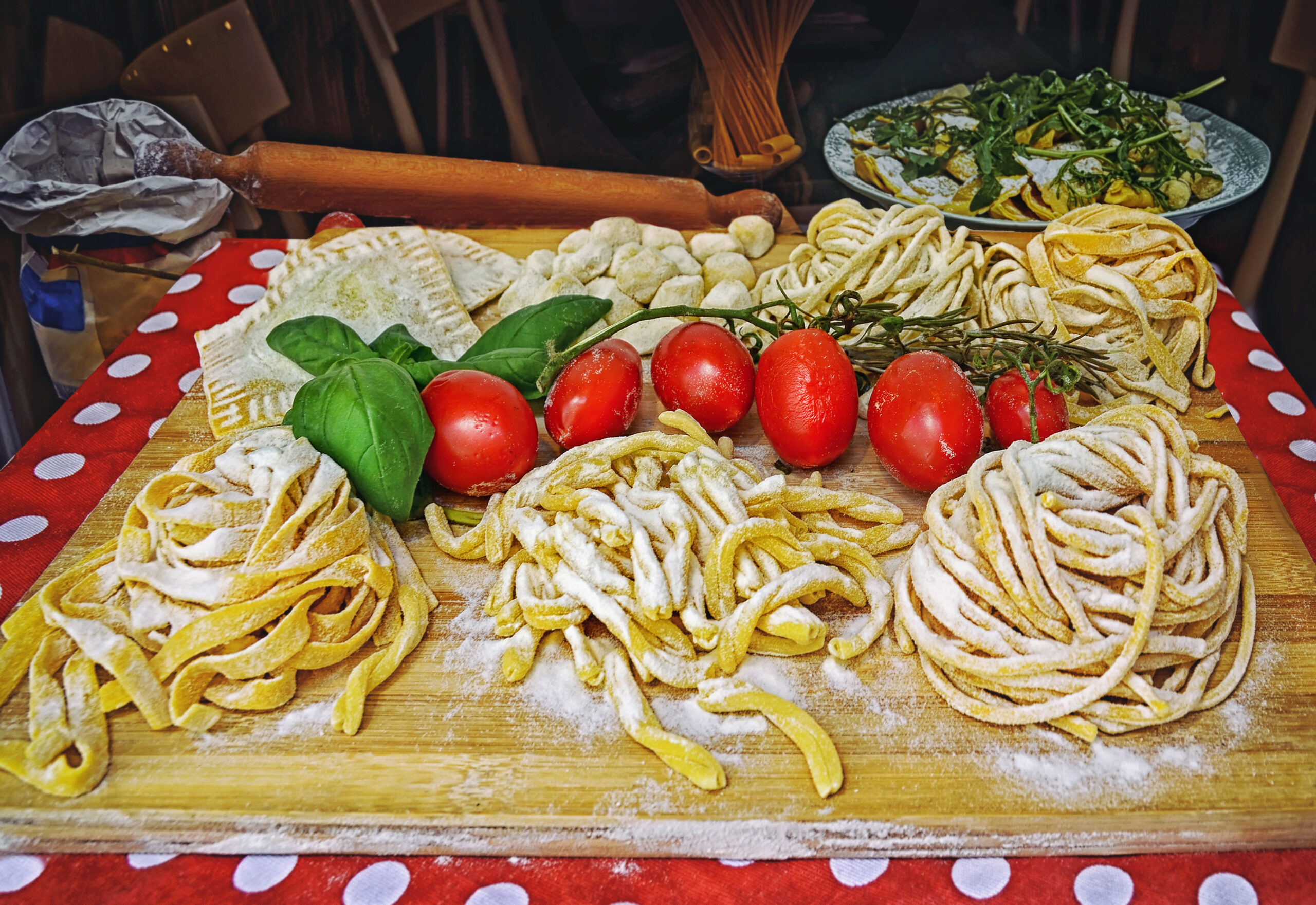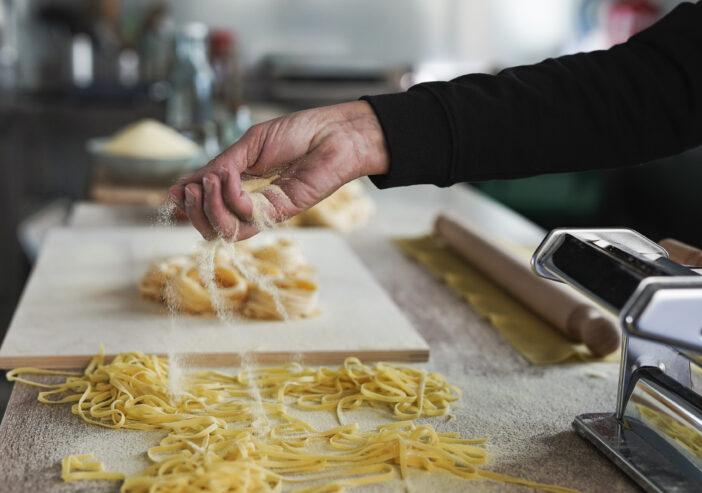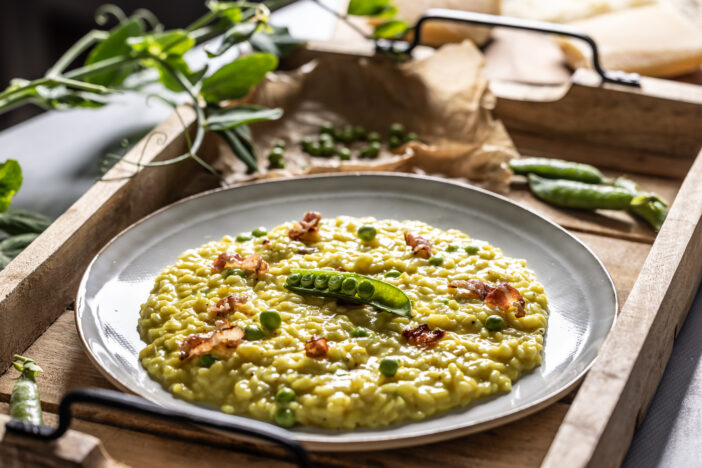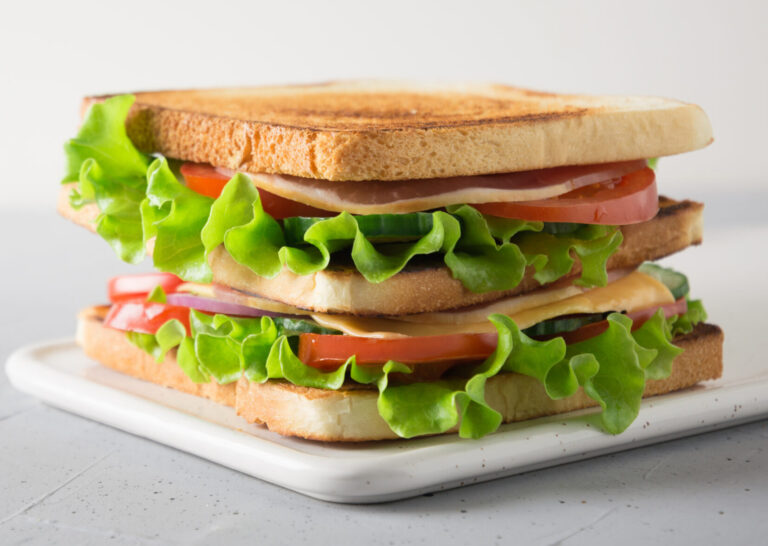10 Traditional Italian Cooking Techniques to Elevate Your Culinary Skills
Craft perfect Italian dishes with traditional techniques like handmade pasta, mastering sauces, risotto secrets, bread baking, and slow-cooking methods.

Italian cuisine is beloved worldwide for its rich flavors and time-honored traditions. Mastering traditional Italian cooking techniques can elevate your culinary skills and bring authentic tastes to your kitchen.
From perfectly al dente pasta to slow-simmered ragù, these methods have been passed down through generations. You’ll discover the secrets behind creating velvety risottos, hand-rolled pasta, and mouthwatering sauces that capture the essence of Italian gastronomy.
Disclosure: As an Amazon Associate, this site earns from qualifying purchases. Thank you!
Mastering the Art of Italian Soffritto
The soffritto is the aromatic foundation of many Italian dishes, providing depth and complexity to your culinary creations.
Perfecting the Holy Trinity of Aromatics
- Key ingredients: Onions, celery, and carrots, finely diced.
- Ratio: Use equal parts of each vegetable for balance.
- Technique: Sauté slowly in olive oil over low heat.
- Time: Cook for 10-15 minutes until vegetables are soft and golden.
- Consistency: Aim for a uniform, paste-like texture.
- Versatility: Use as a base for soups, sauces, and stews.
Why it matters: Mastering soffritto elevates your Italian cooking, infusing dishes with rich, layered flavors.
Enhancing Flavor Profiles in Italian Dishes
- Aromatics: Add garlic, herbs, or pancetta for depth.
- Customization: Adjust ratios to suit specific recipes.
- Regional variations: Explore soffritto styles from different Italian regions.
- Cooking method: Use a heavy-bottomed pan for even heat distribution.
- Storage: Prepare in bulk and freeze for convenience.
- Application: Incorporate into risottos, pasta sauces, and braised meats.
The bottom line: Soffritto is the secret weapon in Italian cuisine, transforming simple ingredients into extraordinary dishes.
The Ancient Technique of Pasta Making by Hand

Rolling and Shaping Fresh Pasta Dough
Key points:
- Start with a simple dough of flour, eggs, and salt
- Knead until smooth and elastic (about 10 minutes)
- Rest dough for 30 minutes before shaping
- Use a rolling pin or pasta machine to create thin sheets
- Cut into desired shapes (tagliatelle, fettuccine, etc.)
- Dust with flour to prevent sticking
- Air-dry briefly before cooking
Why it matters: Handmade pasta offers superior texture and flavor compared to store-bought varieties.
Regional Variations in Pasta Shapes and Textures
The big picture: Italy’s diverse regions boast unique pasta shapes, each designed to complement local ingredients and sauces.
Notable variations:
- Orecchiette (Puglia): Ear-shaped pasta perfect for chunky vegetable sauces
- Trofie (Liguria): Twisted pasta ideal for pesto
- Pici (Tuscany): Hand-rolled, thick spaghetti great with robust meat sauces
- Strozzapreti (Emilia-Romagna): Twisted, elongated shape that pairs well with cream-based sauces
Bottom line: Exploring regional pasta shapes enhances your understanding of Italian cuisine and expands your culinary repertoire.
Perfecting the Slow-Cooked Ragù
Building Layers of Flavor in Meat Sauces
Why it matters: A well-crafted ragù is the cornerstone of many Italian dishes, elevating pasta to new heights.
Key steps:
- Start with soffritto: Sauté onions, carrots, and celery in olive oil.
- Brown the meat: Use a mix of ground beef and pork for depth.
- Add aromatics: Garlic, herbs, and wine enhance complexity.
- Simmer low and slow: Cook for 3-4 hours to meld flavors.
- Finish with milk: A splash adds richness and smooths the sauce.
Pro tip: Deglaze the pan with red wine to capture all the flavorful bits.
Regional Differences in Ragù Preparation
The big picture: Italy’s diverse regions each have their own unique take on ragù.
Regional variations:
- Bolognese (Bologna): Meat-heavy with milk and white wine.
- Napoletana (Naples): Slow-cooked with large cuts of meat.
- Tuscany: Wild boar or rabbit often replaces beef and pork.
- Abruzzese: Includes bell peppers and sometimes lamb.
Bottom line: Exploring regional ragùs offers a taste of Italy’s culinary diversity and local ingredients.
The Delicate Art of Risotto Making

Mastering the Toasting and Gradual Stock Addition
- Key steps: Toast rice, add wine, then slowly incorporate hot stock.
- Toasting: Coat rice in oil or butter, cook until slightly translucent.
- Wine addition: Use white wine, cook until absorbed for depth of flavor.
- Stock technique: Add hot stock gradually, 1/2 cup at a time, stirring constantly.
- Patience is crucial: Process takes 18-20 minutes for optimal creaminess.
- Consistency check: Rice should be creamy but still have a slight bite.
Achieving the Perfect Al Dente Texture
- Al dente definition: Firm to the bite, not too soft or mushy.
- Timing is everything: Start testing rice at 16 minutes.
- Visual cue: Look for a tiny white dot in the center of each grain.
- Texture test: Rice should offer slight resistance when bitten.
- Final stage: Remove from heat when slightly underdone; residual heat will finish cooking.
- Mantecatura: Stir in butter and cheese off-heat for extra creaminess.
Preserving Traditions with Homemade Tomato Sauce
Selecting and Preparing Fresh Tomatoes
Key points:
- Choose ripe, flavorful tomatoes: San Marzano or Roma varieties are ideal.
- Look for firm, heavy fruits with vibrant color and no blemishes.
- Wash and core tomatoes, then blanch in boiling water for 30 seconds.
- Plunge in ice water, then peel off skins easily.
- Cut in half, remove seeds, and chop or puree based on desired sauce texture.
Why it matters: Fresh, high-quality tomatoes are the foundation of authentic Italian tomato sauce.
Slow-Cooking Methods for Rich Flavors
The basics:
- Start with a soffritto base: sauté onions, garlic, and herbs in olive oil.
- Add prepared tomatoes and simmer on low heat for 2-3 hours.
- Stir occasionally to prevent sticking and burning.
- Season with salt and pepper gradually throughout cooking.
- Optional: Add a pinch of sugar to balance acidity if needed.
The impact: Slow-cooking concentrates flavors, creating a rich, authentic sauce that captures traditional Italian taste.
The Importance of Braising in Italian Cuisine
Tenderizing Tough Cuts of Meat
Why it matters: Braising transforms tough, inexpensive cuts into tender, flavorful dishes.
- Start with searing: Brown meat in hot oil to develop a rich flavor base.
- Low and slow: Cook meat in liquid at low temperatures for 2-3 hours.
- Choose the right cuts: Opt for chuck roast, short ribs, or osso buco.
- Aromatics are key: Add onions, garlic, and herbs to infuse depth.
- Patience pays off: The long cooking process breaks down connective tissues, resulting in fork-tender meat.
Creating Flavorful One-Pot Dishes
The big picture: Braising is the secret to many classic Italian one-pot meals.
- Versatile technique: Works for meat, vegetables, and even seafood.
- Builds layers of flavor: Ingredients meld together during the long cooking process.
- Popular dishes: Think osso buco, brasato al Barolo, and chicken cacciatore.
- Economical cooking: Uses less expensive ingredients to create restaurant-quality meals.
- Make-ahead friendly: Flavors often improve when reheated the next day.
Mastering the Technique of Italian Bread Making
Perfecting the Art of Leavening and Kneading
Key points:
- Use a “biga” starter for authentic flavor
- Knead dough for 10-15 minutes until smooth and elastic
- Let dough rise for 1-2 hours in a warm place
- Punch down and shape dough, then let rise again for 30-45 minutes
- Bake at high heat (400-450°F) for crusty exterior
Why it matters: Proper leavening and kneading create bread with perfect texture and taste.
Regional Bread Varieties and Their Unique Preparations
Notable varieties:
- Focaccia (Liguria): Flat, olive oil-rich bread
- Ciabatta (Veneto): Elongated, airy loaf
- Pane di Altamura (Puglia): Dense, semolina-based bread
- Pagnotta del Dittaino (Sicily): Round loaf with sesame seeds
How it’s made: Each variety uses specific ingredients and techniques reflecting local traditions.
Bottom line: Exploring regional breads offers insight into Italy’s diverse culinary landscape.
The Fine Art of Italian Cheese Making
Traditional Methods for Mozzarella and Ricotta
- Mozzarella making: Start with fresh cow’s milk, curdle it with rennet, and cut the curd into small pieces.
- Heat the curds to 95°F (35°C), then stretch and fold them repeatedly in hot water.
- Shape into balls while still hot, then cool in cold water.
- For ricotta: Heat whey leftover from other cheese production to 185°F (85°C).
- Add an acid (like lemon juice) to separate curds from whey.
- Strain the curds through cheesecloth to achieve the desired consistency.
- Both processes require precise temperature control and skilled hands for optimal texture and flavor.
Aging Techniques for Hard Cheeses
- Select high-quality milk and create cheese wheels using traditional methods.
- Store wheels in temperature-controlled rooms (50-59°F or 10-15°C) with 80-85% humidity.
- Turn and brush wheels regularly to ensure even aging and prevent mold growth.
- Age Parmigiano-Reggiano for at least 12 months, some varieties up to 36 months.
- For Pecorino Romano, age for 5-8 months in cool, humid caves.
- Monitor cheese development through smell, texture, and occasional tasting.
- Longer aging intensifies flavors and creates a harder, more crystalline texture.
Preserving Italian Flavors Through Canning and Pickling
Time-Honored Methods for Vegetable Preservation
- Italian canning and pickling techniques preserve seasonal bounty year-round.
- Key methods:
- Water bath canning for high-acid foods like tomatoes
- Pressure canning for low-acid vegetables
- Vinegar-based pickling for crisp textures
- Essential steps:
- Sterilize jars and lids
- Prepare vegetables (wash, chop, blanch if needed)
- Fill jars with hot produce and brine/liquid
- Process according to recipe guidelines
- Popular preserved items: tomatoes, peppers, eggplants, olives
- Tip: Use high-quality, fresh produce for best results
Creating Traditional Antipasti
- Antipasti: Italian appetizers featuring preserved vegetables and meats.
- Key components:
- Marinated artichokes
- Olives (various types)
- Pickled mushrooms
- Sun-dried tomatoes
- Roasted red peppers
- Preparation techniques:
- Marinate vegetables in olive oil, herbs, and vinegar
- Stuff peppers with cheese or tuna
- Create olive mixes with different varieties and seasonings
- Serving suggestions:
- Arrange on a platter with cured meats and cheeses
- Offer crusty bread or breadsticks alongside
Conclusion: Embracing the Heart of Traditional Italian Cooking Techniques
Traditional Italian cooking techniques offer a gateway to authentic flavors and culinary excellence. By mastering these time-honored methods you’ll elevate your dishes to new heights.
From handcrafted pasta to slow-simmered ragù these techniques embody the essence of Italian cuisine. They celebrate regional diversity and the art of transforming simple ingredients into extraordinary meals.
Embrace these traditional methods and you’ll not only create delicious food but also connect with Italy’s rich culinary heritage. Let these techniques inspire your cooking journey and bring the warmth of Italian kitchens to your home.
Frequently Asked Questions
What is soffritto and why is it important in Italian cooking?
Soffritto is a sautéed mixture of onions, celery, and carrots that forms the aromatic base of many Italian dishes. It’s crucial because it adds depth and complexity to soups, sauces, and stews. Slowly cooking these ingredients in olive oil creates a balanced, paste-like texture that enhances the overall flavor profile of the dish.
How do you make authentic Italian pasta by hand?
To make authentic Italian pasta, mix flour, eggs, and salt to form a dough. Knead it for about 10 minutes, then let it rest. Roll the dough thinly and cut it into desired shapes. This process results in pasta with superior texture and flavor compared to store-bought varieties. Different regions in Italy have unique pasta shapes designed to complement local ingredients and sauces.
What’s the secret to a perfect Italian ragù?
The secret to a perfect Italian ragù lies in slow cooking. Start with a soffritto base, brown a mix of ground meats, add aromatics, and simmer for 3-4 hours. A splash of milk at the end adds richness. Regional variations like Bolognese or Napoletana showcase different ingredients and traditions. Patience is key to developing deep, complex flavors.
How do you make authentic Italian risotto?
To make authentic risotto, toast the rice, add white wine, then gradually incorporate hot stock while stirring constantly for 18-20 minutes. Achieve al dente texture by monitoring the rice’s consistency. Finish with mantecatura—stirring in butter and cheese off-heat for creaminess. Patience and constant attention are crucial for the perfect risotto.
What’s the best way to make homemade Italian tomato sauce?
Start with high-quality, ripe tomatoes like San Marzano or Roma. Blanch, peel, and chop them. Begin with a soffritto base, add the tomatoes, and simmer for 2-3 hours. This slow-cooking method enhances the flavor, creating a rich, authentic taste. Using fresh, quality tomatoes is key to achieving the best homemade Italian tomato sauce.
How does braising contribute to Italian cuisine?
Braising is crucial in Italian cuisine for transforming tough cuts of meat into tender, flavorful dishes. The technique involves searing meat, then cooking it low and slow in liquid. It’s versatile, economical, and perfect for one-pot meals like osso buco and chicken cacciatore. Braised dishes often taste better when reheated, making them ideal for make-ahead meals.
What are the key steps in Italian bread making?
Key steps in Italian bread making include using a “biga” starter, kneading the dough for 10-15 minutes, allowing it to rise, shaping, and baking at high temperatures. This process creates bread with a perfect texture and crusty exterior. Regional varieties like focaccia and ciabatta showcase diverse Italian baking traditions.
How are traditional Italian cheeses like mozzarella and ricotta made?
Mozzarella is made by curdling fresh cow’s milk, heating the curds, and shaping them. Ricotta is produced from whey. Both require precise temperature control and skilled hands. Hard cheeses like Parmigiano-Reggiano involve aging techniques, high-quality milk, temperature-controlled storage, and regular monitoring to develop their distinctive flavors and textures.
What are the essential techniques for Italian canning and pickling?
Essential techniques for Italian canning and pickling include water bath canning for high-acid foods, pressure canning for low-acid vegetables, and vinegar-based pickling. Key steps involve sterilizing jars, preparing vegetables, and processing according to recipe guidelines. These methods preserve seasonal produce like tomatoes, peppers, and olives for year-round enjoyment.
How do you create a traditional Italian antipasti platter?
To create a traditional Italian antipasti platter, include marinated vegetables like artichokes, olives, pickled mushrooms, sun-dried tomatoes, and roasted red peppers. Prepare these by marinating in olive oil, herbs, and vinegar. Arrange on a platter with cured meats and cheeses, and serve with crusty bread or breadsticks for an authentic Italian appetizer experience.






